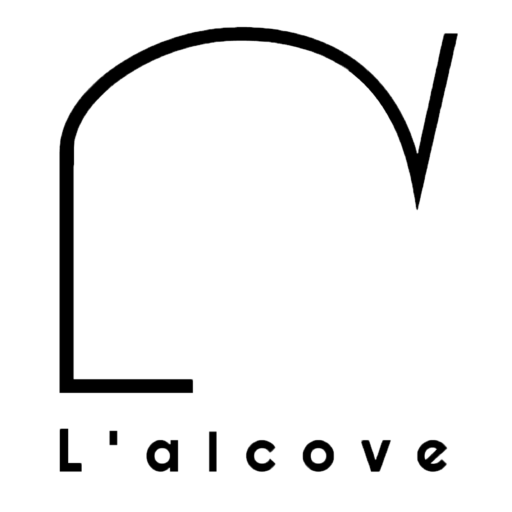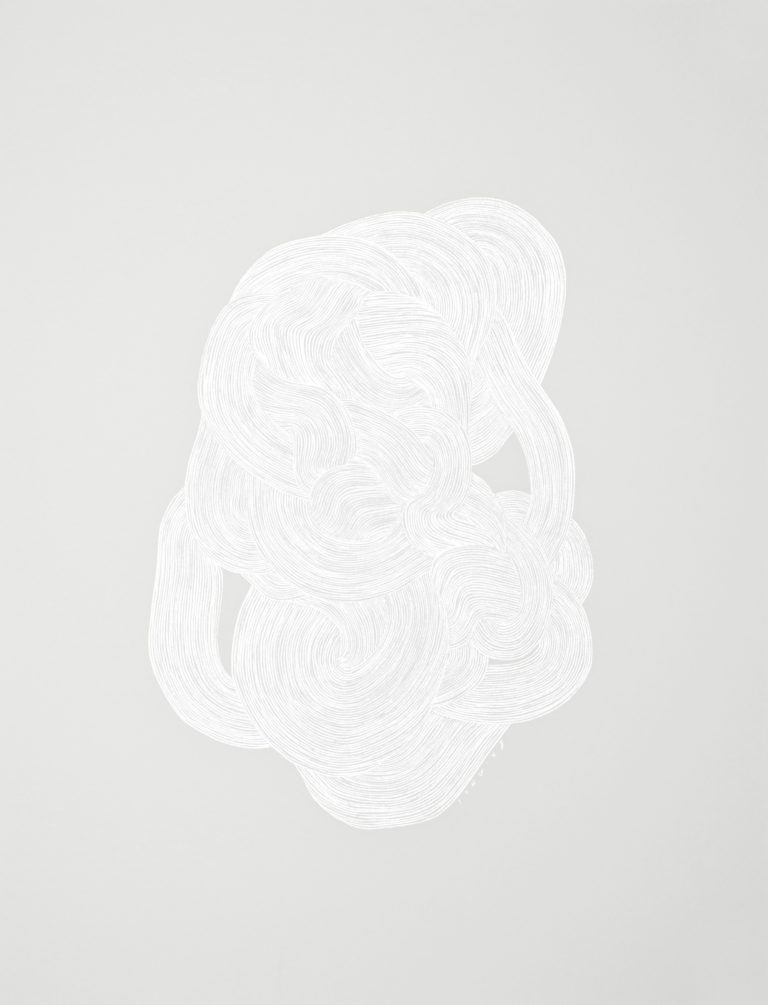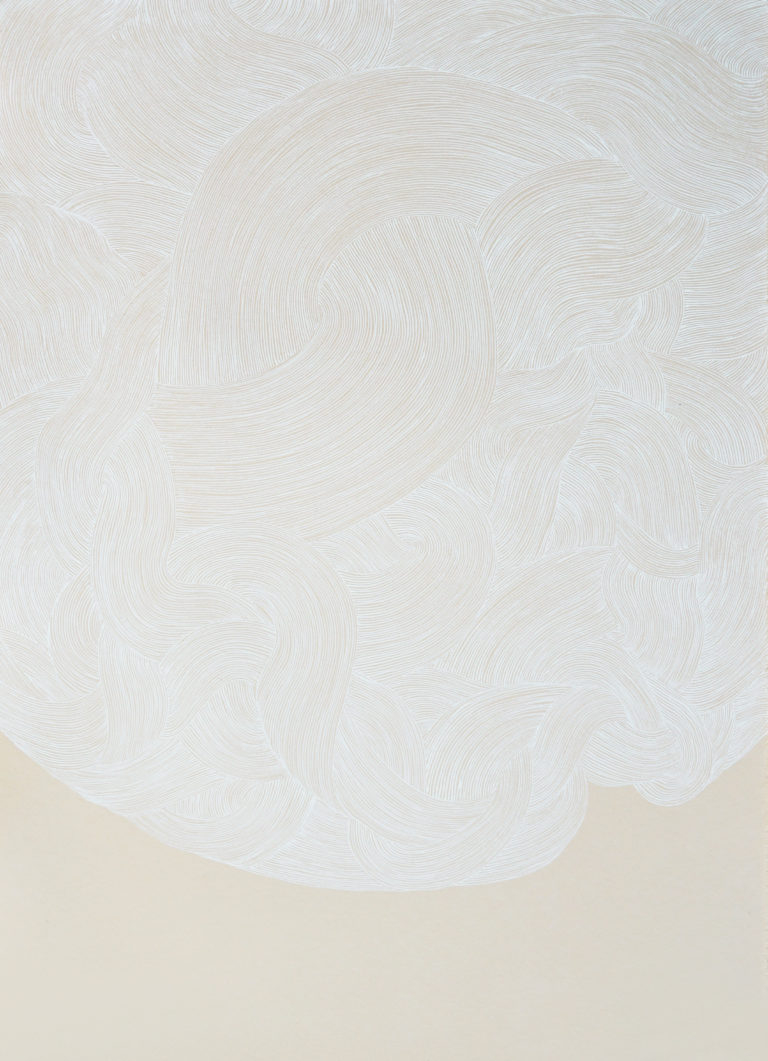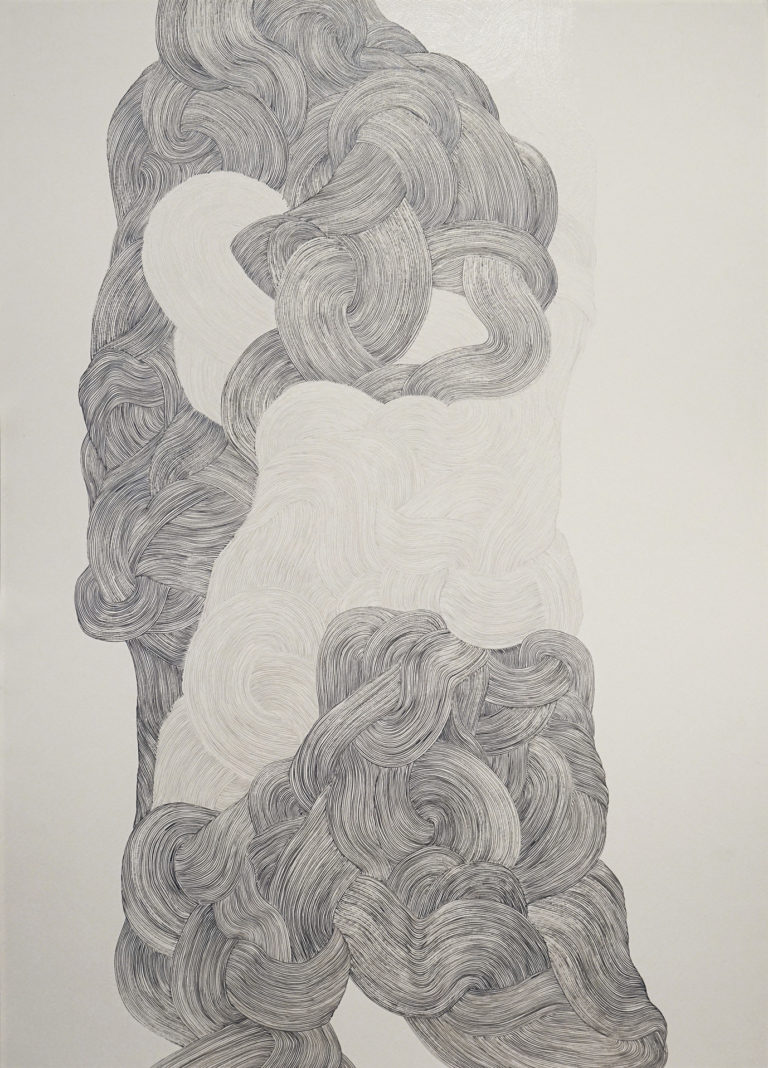Who is Xiaojun Song?
Presentation of the artist Xiaojun Song
Xiaojun Song belongs to the generation born out of the one-child policy that began in China in the 1980s. It’s also where she grew up until the age of 24. After graduating from the Hubei School of Fine Arts in Wuhan, China, Xiaojun Song came to France to continue her art studies at the Ecole des Beaux-Arts de Nancy. In 2010, she obtained her DNAP and in 2012 her DNSEP art option.
Her artistic universe
“Black and white, full and empty, visible and invisible. My work focuses on constant research into their relationships and compositions. The use of different modes and themes of representation allows me to display a wide range of emotions, all of which can be related to the theme of the Body and Nature. According to Laozi, “the Way is the path to follow to reach Virtue. As an object, the Way is absolutely vague and indefinite, but within this indeterminacy it possesses a certain form and reality”. The existing and the non-existent coexist in my work in an infinite dialectic.
I draw inspiration from the work of Pierre Soulages, Tadashi Kawamata, Anish Kapoor and also ancient Chinese painters.
Recently, I’ve started small series that are a little more colourful, on the theme of poppies, which I’ve been working on for a long time, and also on new themes, like pears or pots.
I often use Indian ink in my work. This material is important to me, because as well as being an artistic tool, it also carries an identity.”
Series – Meditation
My “Meditation” series reflects my thoughts on life, made up of tirelessly repeated gestures. From morning to night, from birth to death, everything is fundamentally a repetition of the same cycle. Whatever meaning we give to them, all the things we do lead us irrevocably to the end of our lives. The movement of the line is similar to this, it presents itself as an empty departure. It comes from nowhere to go nowhere. It is both its cause and its effect. Like the Taoist principle of genesis, the first stroke generates the second, then the third and finally the whole composition. The raison d’être of the stroke is not elsewhere than in the successive and repeated generation of the others, when the pictorial principle of the gesture gradually fades away to become fully meditative”.
A few words from Xiaojun Song about her work
“My father is a painter from the generation of artists who were able to emerge in the wake of the Cultural Revolution. At the time, my father’s studio was also my bedroom. I’ve always lived with his paintings and his artistic activities. I started imitating him very early on. As the years went by, drawing became an ordinary part of my life, like eating and drinking. Most of my creations are carried out more or less unconsciously and naturally tell the story of my thoughts as an artist. I see the creative process as introspection and catharsis.
Her return as a guest at L’Alcôve with the exhibition “J’étais là – Acte II”:
In November 2022, the Françoise Besson gallery (Lyon 1e) has organised a solo exhibition by Chinese artist Xiaojun SONG – J’étais là – to coincide with the 16th Lyon Biennial of Contemporary Art. The exhibition is based on the Biennial’s theme of fragility. It includes an interactive installation entitled “The Fourth Wall”, the invisible “Meditations” series, as well as a brand new meditative series in white and her new research into three-dimensional pieces from the Toile series. In 2023, she returns with the continuation of this series on view at Galerie-Atelier L’Alcôve from 9 to 26 November.
Xiaojun says:
I use white in my work to signify the absence and the covering that marked my fifteen years of life in France. The fragility of being alone and uprooted was compounded by a strong sense of living in a void, in time and space. This introspection led me to see life as one big rehearsal. I stayed living in my past, time passed, and all the repetitions of my daily gestures left me with nothing. So I started tracing these moments, writing them down one by one on paper, as proof of having lived. They intermingle and agglomerate uncontrollably in my paintings, and I deliberately forget my very academic training in drawing in China to make room for an experience. With these strokes, I’m looking for the relationship between absence and existence, emptiness and fullness.
A line is like a thread, it has two heads. It can link two elements. We are born with a thread, the first in our lives, linking us to our mother. Over time, we weave our identity, made up of other links, a web of invisible threads that connect us to other people. All this builds us up. To be uprooted is to cut these threads. So I keep tracing them, and they become the features, the moments, the marks of my existence. They all say: I was there.
A year later, Xiaojun wanted to return to the Alcove gallery to present the second act of this exhibition, because this place played an essential role for her from 2018 to 2022. It is the place where she reconnected with her dreams, the place where the statement ‘I was there’ takes on its full meaning.



